The Cave of Cala dei Genovesi, on the western side of the island of Levanzo, is the place where one of the most important examples of late-glacial wall art in the entire Mediterranean was found, a complex of Palaeolithic rock art of considerable value which makes it a small "sanctuary".
We find here two distinct cycles, both artistically and chronologically: one engraved and the other painted.
The engravings depict, in addition to various animals, some human figures, on which we will focus our attention in particular.
Animal Engravingsstriking for the simplicity of execution, [...] but they are drawn with a skilful, sure line and with perfect proportions of the bodies, [...] represented with vivacity of expression and great variety of attitudes” (Tusa 1997). the aurochs (Bos primigenius) is the most represented animal (13 specimens), followed by 12 specimens of equids and 8 cervids.
At the foot of the back wall of the cave, in an isolated position (perhaps deliberately), we find engraved three depersonalized human figures – as often happens in the anthropomorphic representations of Paleolithic art – but placed side by side in a position that suggests a dance scene. Due to the anatomical imprecision that characterizes them and the scarcity of anatomical details they can recall the anthropomorphic paintings of the Franco-Cantabrian region.
The first figure on the left, the smallest, has its arms raised in a position that has been interpreted as dancing or praying; her head, seen in profile, appears to have a beak. The other two figures (perhaps a man and a woman) have wedge-shaped heads, as if they were wearing a headdress or a mask, and have no facial features; the central figure is the most massive, with the body bordered by a series of segments, engraved lines starting from the neck (hair?) and lines forming a band at the height of the belt, separating the bust and legs.
The figure to the right of the trio has, as signs that distinguish it from the other, two lines starting from the head, which can perhaps be interpreted as a ribbon or a lock of hair, and three lines on the arm that suggest bracelets. This image, perhaps female, has a sinuous shape that Graziosi found akin to another anthropomorphic – this time painted – also probably from the Paleolithic era.
In fact, a small figure painted in red ocher, isolated but not far from the graphite figures, in the final section of the right wall also seems to belong to the same cycle (and dating) of the anthropomorphic engravings. It is the only subject painted in red inside the cave and the only one drawn in a naturalistic style.
"It is drawn in a position to convey a perspective effect: it would seem to be lying down, with the legs arched and spread apart, the body inclined which gives the sense of relaxation” (Mannino).
The black figures of the painted cycle, on the other hand, date back to an age between the final Neolithic and the Eneolithic, when the sea had raised its level and divided the islet from the mainland: they are more than a hundred anthropomorphic, zoomorphic and idols, grouped in three different areas of the cave but always on the inside walls of the cave, completely in the dark.
In the first group (on the left wall in a sort of continuous frieze) we find about twenty figures in black including pigs, idols, fish, dogs, anthropomorphic animals and a bovid, plus a series of other not easily legible signs.
The second group is located almost in the center of the terminal part of the cave: it consists of most anthropomorphic figures (about twenty), the largest of which has a dog next to it. Also in this set we find a dozen idols and what appears to be a small fish.
The third group is scattered on the ceiling of the cave: anthropomorphic and other signs, including a boat traced with the fingers on the decalcified rock. We want to focus our attention in particular on the idol-like images of this second cycle, including some of the so-called "violin" type defined as "of Cycladic ancestry" as they are extremely similar to idols of the coeval period, coming from the Aegean islands (see images).
The idols of Levanzo have recently been correlated with a group of stone figurines found near an altar in the hypogean funerary-templar complex below the megalithic circle of Xaghra in Gozo (Malta).
"The circumstances of the discovery led the excavators to believe it plausible that the six statuettes had been enclosed in a cloth bag and placed near the altar, where they were periodically used to conduct particular pre-burial liturgies, connected to the cult of the dead of rank, performed in the hypogeum during the Tarxien phase (around 3000 BC). In other words, the little idols constituted the kit of liturgical paraphernalia of a person in charge of the cult who kept them in a ready-to-use bag” (Buccellato et al.).
The idols are in fact of the size to be challenged and, due to their shape, also stickable to the ground or into objects with cavities. Liturgies with the use of cultic "puppets" seem frequent in Maltese prehistory.
The discovery of the "puppets" of Xaghra made us reconsider the idol-like figures of Levanzo, also taking into account the chronological convergence of the two complexes. Furthermore, we must not forget that during the height of the last glaciation not only were Levanzo and Sicily connected by a land bridge caused by the low sea level: Malta and Sicily were also connected; even cultural contact is more than likely.
In two points of the wall paintings the idols of Levanzo appear in a clear horizontal series, one next to the other; in a third point interspersed with images of fish and other figures. In all three cases it is a series of five little idols: three of the "violin" type and two cylindrical. Even if the order of the idols changes in the three series, and we are not able to understand if there is a meaning in the order of the idols, there seems to be a clear intentionality in the representation which is obviously not accidental. It has been hypothesized that the three series represent the liturgical equipment of a shaman or shaman, someone involved in "shamanic-theatrical" rites represented on the walls of the cave and then practiced with the royal idols. Dating back to the same historical period, idols completely identical to those depicted in Levanzo are found a Camaro, Messina, in two specimens: one reproducing the "violin" type and the other the cylindrical type. These idols, and perhaps also the rites connected to them, are perhaps of origin outside the island, as the Cycladic iconography on the one hand, and the use of idols as elements of 'theatrical' liturgical representation of Maltese origin seem to suggest. According to Tusa, specifically, the "violin" type is of clear Aegean-Balkan descent and represents the female element, while the cylindrical type is of clear Maltese ancestry and could represent the male element. This interpretative hypothesis places Sicily within a vast geographical-cultural area which includes the central-eastern Mediterranean on one side, and Sardinia and the Iberian Peninsula on the other.



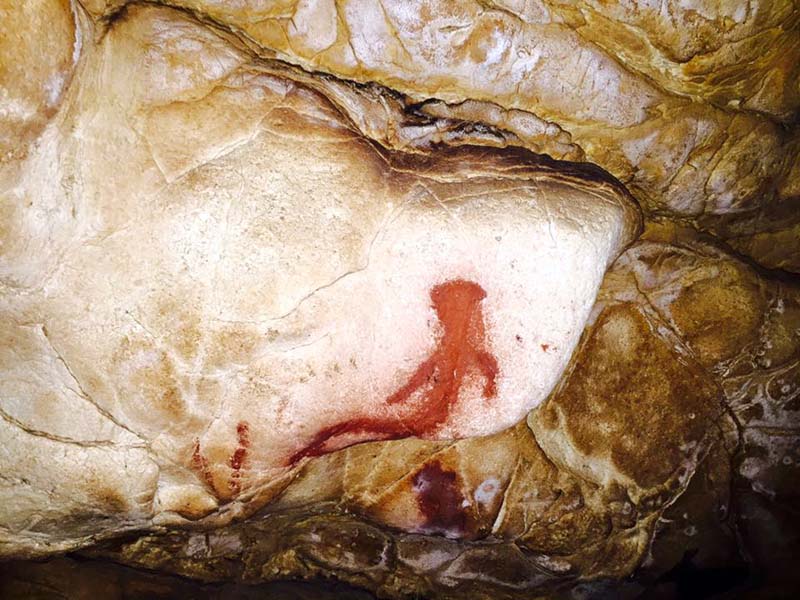
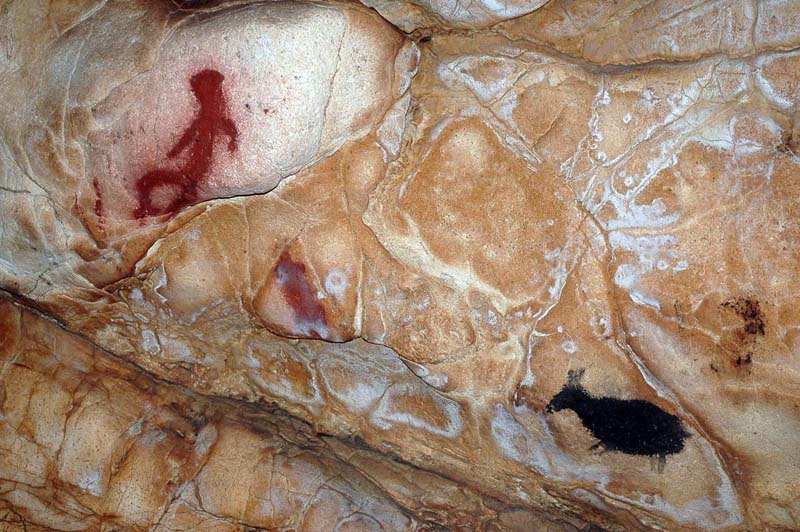
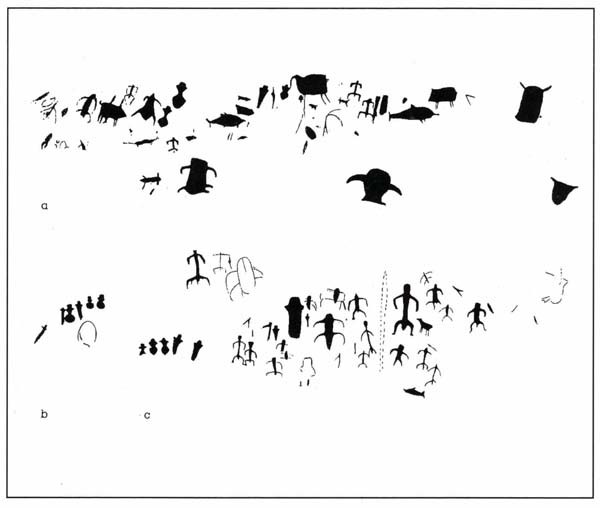
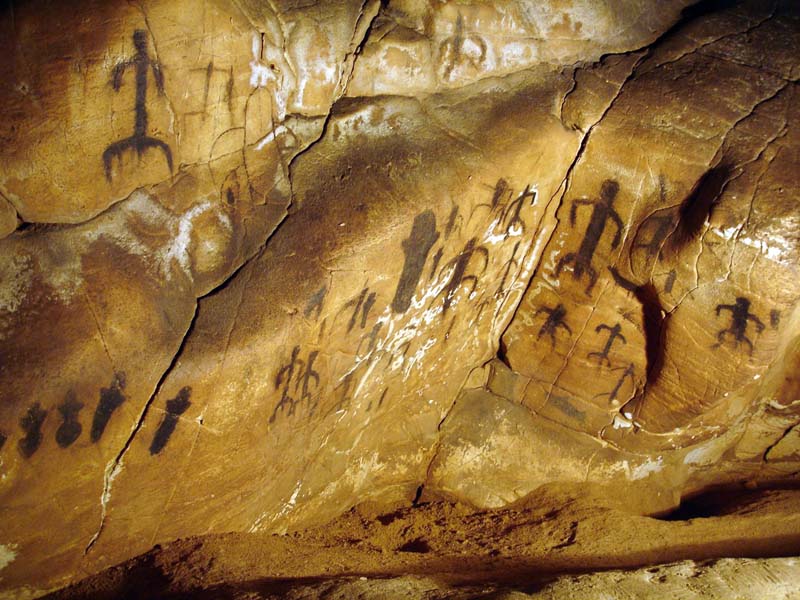
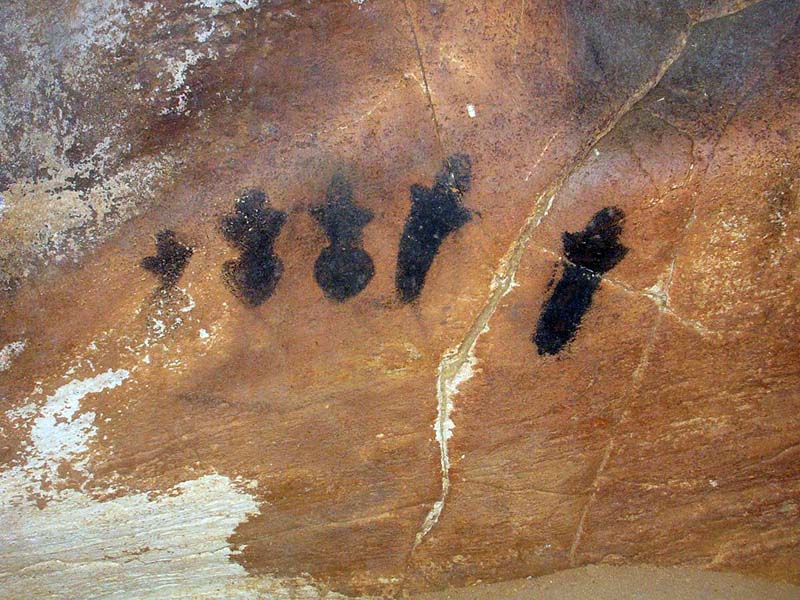
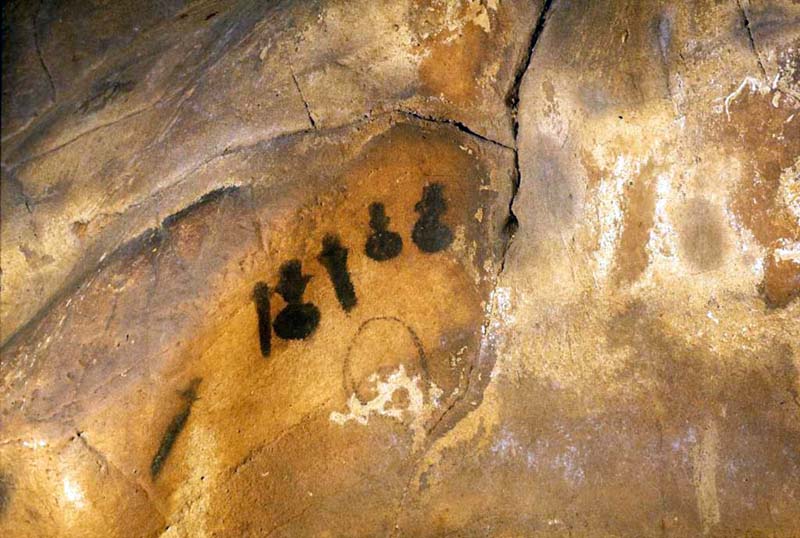
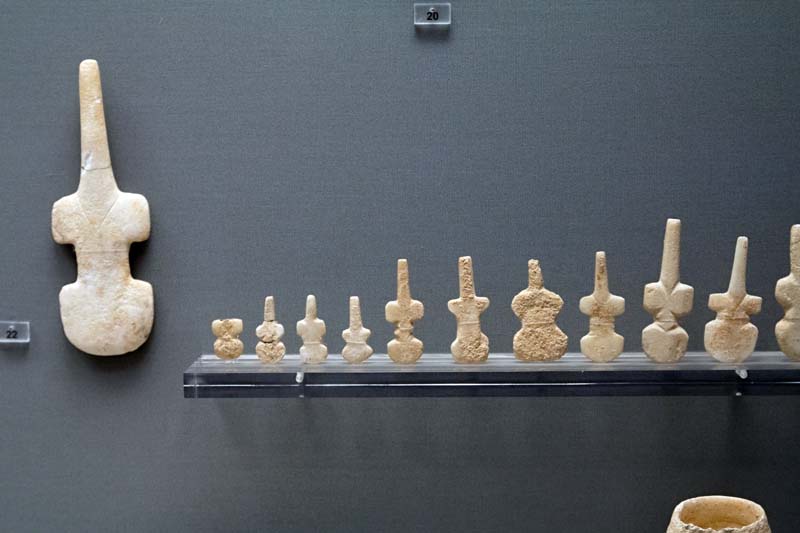
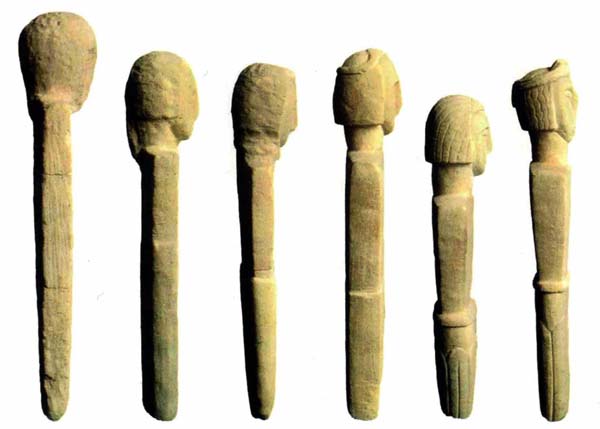

Historical notes
The island of Levanzo has returned the first and most important evidence of rock art in Sicily, and among the most important in the Mediterranean. The engravings were discovered in 1950 by Paolo Graziosi, A. Micheli and Francesca Minellono during a survey campaign of the much later paintings discovered the previous year by Minellono herself. “In the autumn of 1949, Miss Francesca Minellono from Florence, a painter, came to the Institute of Palaeontology to tell me about a discovery she made, during the summer, in a cave on the small island of Levanzo in the Egadi archipelago [...] . It consisted of a series of figures painted in black on the walls of the innermost part of the cave, of which she also showed me some sketches made by herself and which subsequently proved to be very faithful” (Graziosi 1962).
CARD
LATEST PUBLISHED TEXTS
VISIT THE FACTSHEETS BY OBJECT

